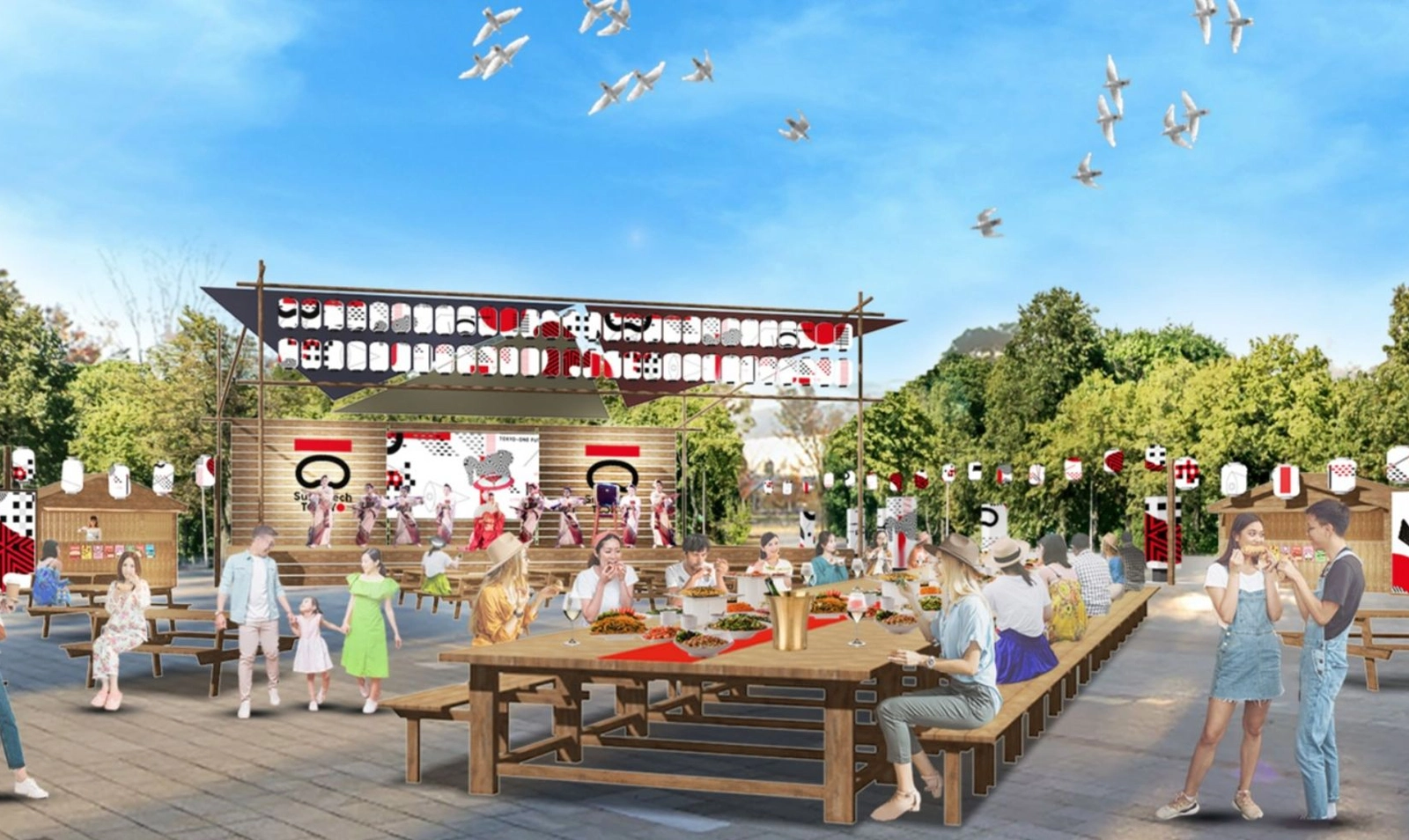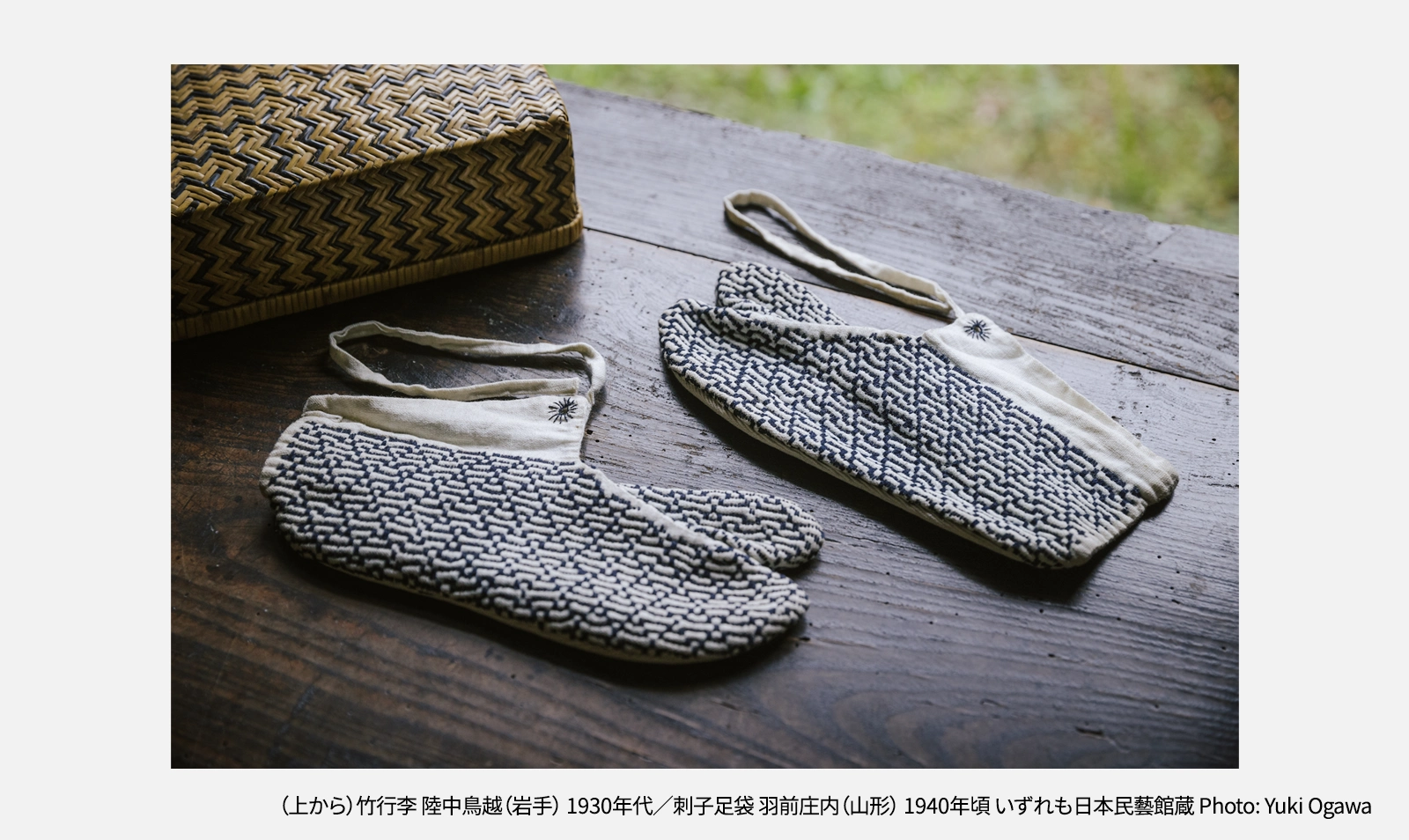Special Feature:
Amazing nature on a day-trip around Tokyo
Subscribe
Download
index
News
Flying cars and space elevators – Step into the Future of Tokyo here
April 27 to May 26, 2024 Bay Area Event
News
Discover Japan’s “Folk Art” of Daily Life at this Exhibition
April 24 to June 30, 2024 Setagaya Exhibition
Season
Woodblock prints comes to life! Famed spots for irises loved for centuries
May 27 - June 16, 2024 Katsushika Event
Natural splendor in the Tama region on a day-trip from the city center
The cutting-edge megalopolis of Tokyo holds a surprising wealth of nature. Sprawling west of Tokyo, the lush forests and crystal-clear streams of the Tama area stand out as a haven where we can be in harmony with nature while supporting environmental conservation. Opportunities also abound to get in touch with the lives of local people. Take some time outside the city streets of skyscrapers and find a different side of Tokyo just an hour from downtown.
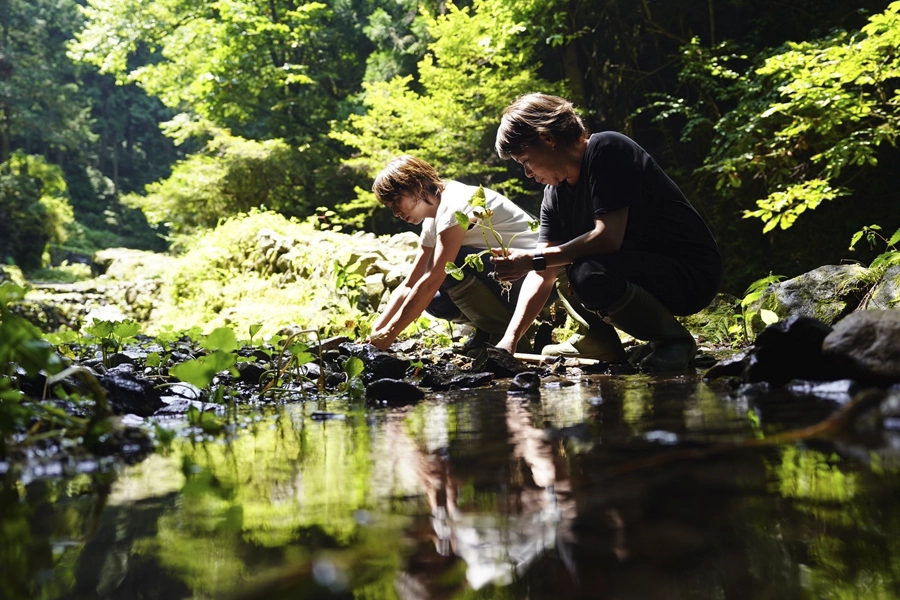



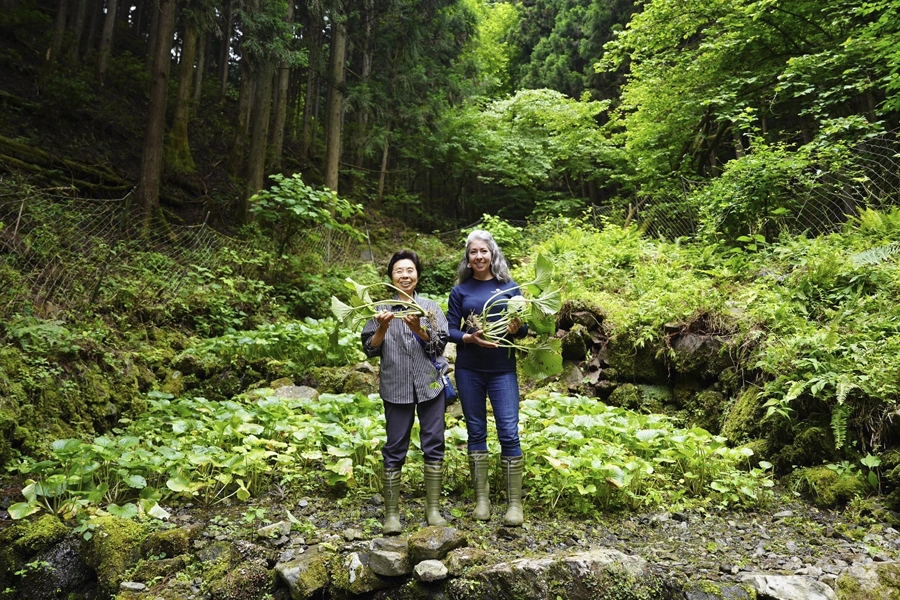 The refreshing, spicy zing of wasabi is an indispensable condiment of sushi, sashimi and a host of other Japanese dishes. Because clear, mineral-rich spring water is essential for wasabi cultivation, even in Japan, only a handful of places offer suitable conditions. Wasabi cultivation has flourished amid the mountain streams of the Tama region since the Edo period (1603-1868), even offered in tribute to the Edo shogunate. Tokyo still boasts the third largest production in Japan, though a lack of successors due to the aging population is fast becoming a serious issue.
There is a tour conducted by the Tsunoi brothers, Hitoshi and Tatsuya, who have been engaged in cultivating wasabi since 2020, drawn to its depth. They teach participants about the Tama region’s wasabi cultivation and the current situation of the region. While strolling through the natural setting, participants can learn about issues facing the forests and wider region, as well as savor freshly grated wasabi. This eye-opening experience gives us a deeper understanding of the challenges and fascination of sustainable agriculture.
The refreshing, spicy zing of wasabi is an indispensable condiment of sushi, sashimi and a host of other Japanese dishes. Because clear, mineral-rich spring water is essential for wasabi cultivation, even in Japan, only a handful of places offer suitable conditions. Wasabi cultivation has flourished amid the mountain streams of the Tama region since the Edo period (1603-1868), even offered in tribute to the Edo shogunate. Tokyo still boasts the third largest production in Japan, though a lack of successors due to the aging population is fast becoming a serious issue.
There is a tour conducted by the Tsunoi brothers, Hitoshi and Tatsuya, who have been engaged in cultivating wasabi since 2020, drawn to its depth. They teach participants about the Tama region’s wasabi cultivation and the current situation of the region. While strolling through the natural setting, participants can learn about issues facing the forests and wider region, as well as savor freshly grated wasabi. This eye-opening experience gives us a deeper understanding of the challenges and fascination of sustainable agriculture.
WASABI EXPERIENCE TOUR




 Ten years have passed since Japanese cuisine was registered as an Intangible Cultural Heritage by UNESCO. Since then, sake, the ultimate pairing for Japanese food, has been gaining more and more attention. Made with traditional brewing methods using rice, koji (rice malt), and water, sake’s unique flavor is a reflection of regional terroir.
Ten years have passed since Japanese cuisine was registered as an Intangible Cultural Heritage by UNESCO. Since then, sake, the ultimate pairing for Japanese food, has been gaining more and more attention. Made with traditional brewing methods using rice, koji (rice malt), and water, sake’s unique flavor is a reflection of regional terroir.
Founded in 1863, Ishikawa Sake Brewery has for generations brewed sake with the natural waters of the Tama River pumped up from the brewery grounds. Following the unchanged, traditional method of kanzukuri (winter production), sake continues to be brewed only from autumn until the beginning of the new year, in ways that are in harmony with the Tama region’s natural environment. The company makes not only sake, but beer as well, with events held on the 4th weekend of every month offering the chance to tour the brewery and buy sake and beer by weight. The sense of history is palpable throughout the grounds, with six buildings on the premises registered as Tangible Cultural Properties of Japan.
Ishikawa Brewery

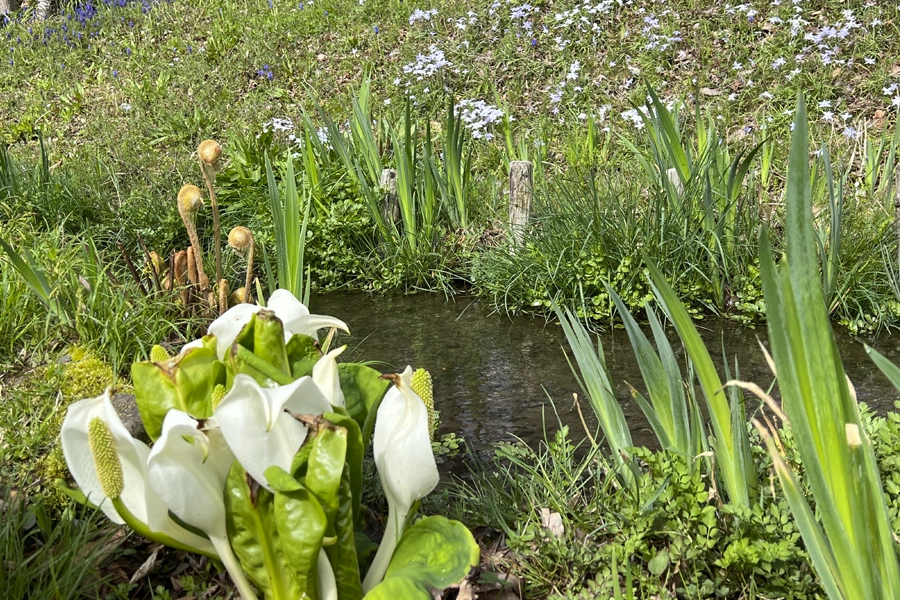
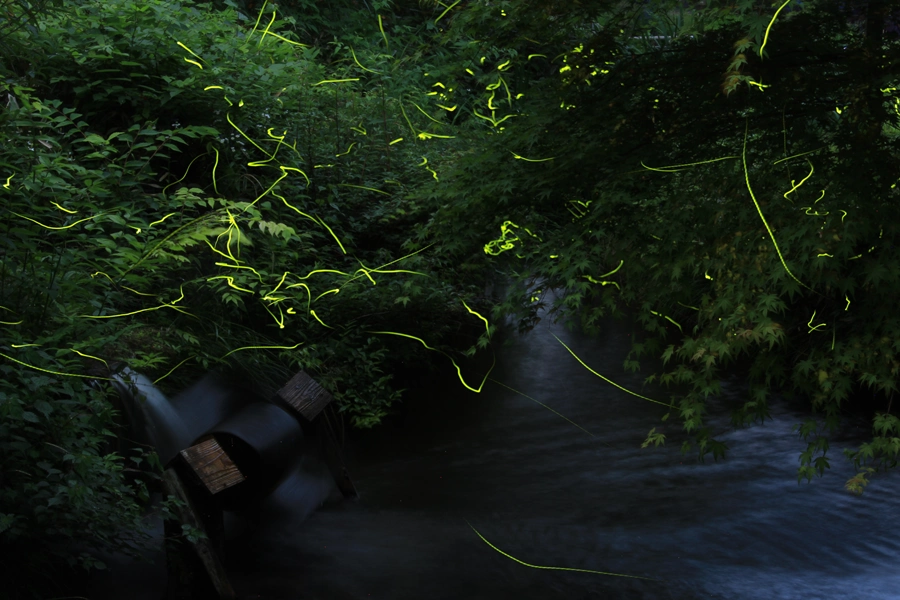
 Fireflies have been an adored highlight of early summer for over a millennium. Inhabiting only lush natural settings with clear flowing streams, the luminous beings have become an increasingly rare sight in urban areas. Their sensitivity has become an indicator of the need for environmental conservation.
Fireflies have been an adored highlight of early summer for over a millennium. Inhabiting only lush natural settings with clear flowing streams, the luminous beings have become an increasingly rare sight in urban areas. Their sensitivity has become an indicator of the need for environmental conservation.
Hachioji’s recreational nature park, Yuyake Koyake Fureai no Sato, opens its grounds in the evenings from mid to late June. Visitors can enjoy the sight of both Genji fireflies and Heike fireflies that naturally inhabit the clear waters of the Kita-Asakawa River and small streams flowing through the park. These points of gentle light flying to and fro, flickering in the night, is an unforgettable, magical sight.
Firefly Nights (Hotaru no Yube)




 Cycling is an easy, enjoyable way to get the most out of the Tama region’s natural splendor. “Trekkling” offers a variety of cycling tours and rents bicycles right in front of Okutama Station.
Cycling is an easy, enjoyable way to get the most out of the Tama region’s natural splendor. “Trekkling” offers a variety of cycling tours and rents bicycles right in front of Okutama Station.
Tours include commentary from a British guide, and helmets with built-in intercoms to enjoy talking with friends while on the move. Choose an E-bike (mountain bike with electric power boost) to easily scale slopes regardless of your physical strength. Rest assured that all cyclists receive thoughtful instruction on traffic rules. Immerse yourself in the glory of nature along the valley and explore the area’s history, foods and other local attractions to your heart’s content.
TREKKLING
WASABI EXPERIENCE TOUR





WASABI EXPERIENCE TOUR
Sake brewery tour





Founded in 1863, Ishikawa Sake Brewery has for generations brewed sake with the natural waters of the Tama River pumped up from the brewery grounds. Following the unchanged, traditional method of kanzukuri (winter production), sake continues to be brewed only from autumn until the beginning of the new year, in ways that are in harmony with the Tama region’s natural environment. The company makes not only sake, but beer as well, with events held on the 4th weekend of every month offering the chance to tour the brewery and buy sake and beer by weight. The sense of history is palpable throughout the grounds, with six buildings on the premises registered as Tangible Cultural Properties of Japan.
Ishikawa Brewery
Firefly Twilight




Hachioji’s recreational nature park, Yuyake Koyake Fureai no Sato, opens its grounds in the evenings from mid to late June. Visitors can enjoy the sight of both Genji fireflies and Heike fireflies that naturally inhabit the clear waters of the Kita-Asakawa River and small streams flowing through the park. These points of gentle light flying to and fro, flickering in the night, is an unforgettable, magical sight.
Firefly Nights (Hotaru no Yube)
Cycling





Tours include commentary from a British guide, and helmets with built-in intercoms to enjoy talking with friends while on the move. Choose an E-bike (mountain bike with electric power boost) to easily scale slopes regardless of your physical strength. Rest assured that all cyclists receive thoughtful instruction on traffic rules. Immerse yourself in the glory of nature along the valley and explore the area’s history, foods and other local attractions to your heart’s content.
TREKKLING
Notice: Information as of April 2024.



